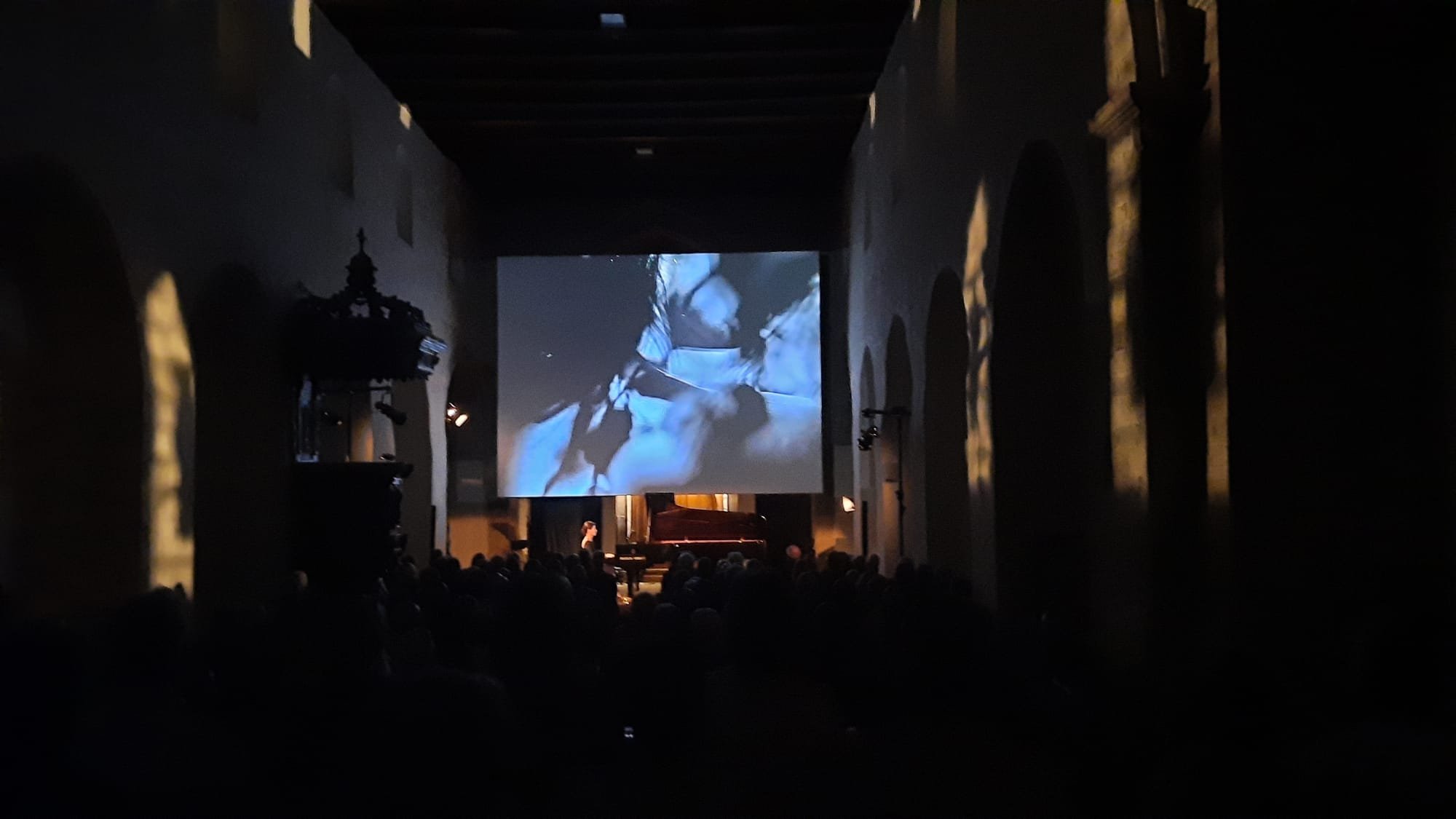Goldberg Visions, Multimedia Concert
Irina Lankova, piano
Isabelle Françaix, video
At the end of his life, Bach imagined thirty variations from an Aria, between its initial appearance and its final metamorphosis.
Each variation is a tireless quest for simplicity, sometimes to the point of abstraction.
Each vision embodies on screen our fundamental connection with nature, the mystery of the passing time, and our fragility.
A grand piano, a large screen, thirty-two fleeting moments, images and music intertwined.
Press Review :
“Utterly beautiful…”
“Remarkable…”
“Fascinating…”,
La Libre Belgique, Martine Dumont-Mergaye
“Disarming authenticity…”
L’Echo, Xavier Flament
LISTEN / a complex construction and an initiatory journey
Goldberg Variations is a major composition for harpsichord, written in 1741 by J.S. Bach.
We don’t know exactly why this name, there are several interpretations, especially from early biographies, but no evidence for either of them. The only fact that we know for sure is that Bach had a very talented student, Joann Gottlieb Goldberg.
The work consists of an Aria and 30 variations. The variations do not follow the melody of the aria, as it’s often the case in Variation form, but rather use its bassline and chord progression. There are 32 bars in the Aria and there are 32 pieces if we count all the Variations and the two iterations of the Aria.
The formal structure is very elaborate. Every third variation there is a canon*, following an expanding pattern: variation 3 is a canon at the unison, variation 6 is a canon at the second, variation 9 is a canon at the third, and so on until variation 27, which is a canon at the ninth. The final variation, instead of being the expected canon in the tenth, is a humorous Quodlibet (means ‘Whatever you wish’ in Latin) based on folksongs.
* A canon is a polyphonic musical technique that employs a melody with one or more imitations of the melody played after a given duration. Repetitions can be exact in pitch and rhythm or can undergo transformations to change the pitch and rhythm.
All the variations are in G major, apart from variations 15, 21, and 25, which are in G minor.
Each Variation splits into two parts that normally have to be repeated, which I’m not going to do in this particular project ‘Goldberg Visions’, simply because with the images, it becomes too long.
Also, the whole cycle splits into two halves. In the middle, between Variation 15 and 16, there is a ‘break’, and the 16th is called Ouverture. At the end of the thirty variations, the Aria returns to close the cycle.
The return to the Aria after 30 variations can’t’ be a neutral one for anyone,
but it can be perceived in so many different ways:
wistful or nostalgic, as a reminiscence of a past;
sad and resigned,
as something coming finally to an end;
the reminder of something eternal;
the last link to close a chain or a cycle;
or a new beginning, a new day, a new life.. why not?
But in any of these possible scenarios, it’s definitely a different Aria from the one heard at the beginning, even though it’s identical in terms of notes.
Irina Lankova
SEE / our intimate and fundamental link to nature
At the end of his life, Bach imagined thirty variations from an Aria, between its initial appearance and its final metamorphosis. We can consider them as a sensitive and spiritual journey, even as a life cycle.
By imagining a visual counterpoint to the Goldberg Variations, I thought of Yi Jing, the Classic of Changes: “… this book born more than 3000 years ago in China reconstitutes n sixty-four hexagrams the wheel of the multiple existential states that confronts every human being through the combination of eight elements: sky, earth, water, fire, mountains, mist, thunder and wind. In the East as in the West, the exploration of self often starts within the relationship with nature.
A grand piano, a large screen, a few subtle and discreet lights: we captured thirty-two fleeting moments, image and music intertwined.
Each variation is a tireless quest for simplicity, sometimes to the point of abstraction. Sensual and lively, it reaches to our intimacy. Each vision embodies on screen our fundamental link to the living, the mystery of the passing time and our fragility.
TOUCH / a wild veil between you and the world
How to film the woman who crosses the Goldberg Visions without locking her into a particular era? How do you reveal her on-screen without defining her by her clothes? This question raises another: why a woman?
Whether a man or a woman, the story would be the same. However, the pianist of Goldberg Visions is a woman. She appears active and creative on stage, purely sensitive on the screen. This disturbing duality tells us of the complexity of being, an unspoken, its energy, its sources. Dressed in a veil, she crosses images and life in all her vulnerability.
Simply draped in a veil, she crosses the images and life with her vulnerability.
Just a veil of natural fiber, made of linen and jute, something that captures the light.
A wild veil between oneself and the world.
A border.
A passage.
A limit.
A skin of the soul.
Isabelle Françaix
Goldberg Visions for concerts :
Goldberg Visions for public or private concert engagements: production@limeandhoney.be








